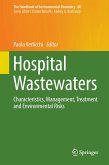This volume provides essential information on the origin and evolution of Greek rivers, as well as their ecological and anthropogenic characteristics. The topics covered include geomythology, biogeography, hydrology, hydrobiology, hydrogeochemistry, geological and biogeochemical processes, anthropogenic pressures and ecological impacts, water management - both in the antiquity and today - and river restoration.
The book is divided into four parts, the first of which explores the importance of rivers for ancient Greek civilization and the natural processes affecting their evolution during the Holocene. In the second part, the hydrological, hydrochemical and biological features of Greek rivers and the unique biogeographical characteristics that form the basis for their high biodiversity and endemism are highlighted, while the third part comprehensively discusses the impacts of environmental pollution on the structure and function of Greek river ecosystems. In turn, thefinal part describes the current socio-economic factors in Greece that are affecting established water management practices, the application of ecohydrological approaches in restoring fragmented rivers, and the lessons learned from restoring aquatic ecosystems in general as a paradigm for understanding and minimizing anthropogenic impacts on water resources, at the Mediterranean scale.
Given the breadth and depth of its coverage, the book offers an invaluable source of information for researchers, students and environmental managers alike.
The book is divided into four parts, the first of which explores the importance of rivers for ancient Greek civilization and the natural processes affecting their evolution during the Holocene. In the second part, the hydrological, hydrochemical and biological features of Greek rivers and the unique biogeographical characteristics that form the basis for their high biodiversity and endemism are highlighted, while the third part comprehensively discusses the impacts of environmental pollution on the structure and function of Greek river ecosystems. In turn, thefinal part describes the current socio-economic factors in Greece that are affecting established water management practices, the application of ecohydrological approaches in restoring fragmented rivers, and the lessons learned from restoring aquatic ecosystems in general as a paradigm for understanding and minimizing anthropogenic impacts on water resources, at the Mediterranean scale.
Given the breadth and depth of its coverage, the book offers an invaluable source of information for researchers, students and environmental managers alike.









